Mystery Steamship: SC Almirante Barroso
In early February 2018 a Red Sea Explorers dive team discovered a new steamship wreck in the Straits of Gubal about three miles north of the island. After some research and sharing information with local divers and shipwreck enthusiasts, we believe that the wreckage is that of the Brazilian warship SC Almirante Barroso. She was a three masted tall ship with square sails that was circumnavigating the globe at the end of the 19th century. She was lost at sea in 1893 after hitting rocks in the Al Zeit area.
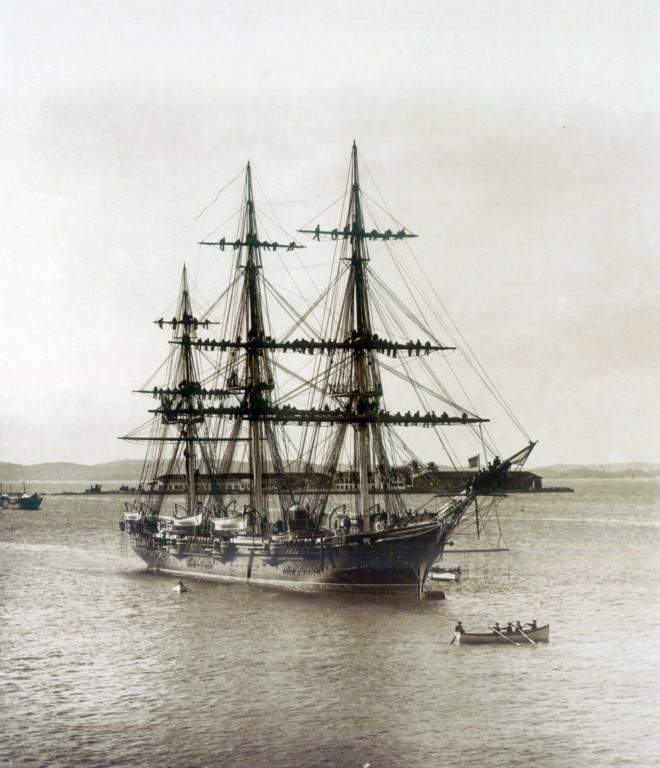
None of the items found on the wreck thus far provide 100% identification. However the size, location and different characteristics of the wreck make us quite certain of its identity. For example, there is damage to the hull where the rigging use to connect. Items such as pulleys and blocks used in sailing rigs are further evidence that she is a tall ship. The question as to where the superstructure has gone is answered by the fact that this is a sailing ship and there was limited or no superstructure. The missing parts were likely made of wood that has since disintegrated. Between the items on the wreck or around it in the debris field, we believe that the wreck is complete.
Our mission now is to continue to document and catalogue all the parts of the shipwreck in order to conserve it for further research. Using different technologies such as photogrammetry and video documentation, we aim to keep a thorough record of the order and manner that parts were discovered. We will also search for items that might be buried in and around the wreck. This is a long term project and lots of dives will be conducted on the shipwreck as part of the Wreck Exploration Project.
This wreck is one of four that have been found and explored by Red Sea Explorers in this year alone. We have a multitude of other locations to dive as part the Wreck Exploration Project in the coming months and years to come. Contact us if you are interested in a Wreck Exploration trip.
You can read the reports of previous dives bellow.
--------------------------------------------------------------
Red Sea Explorers teamed up with Ursuit Explorer Mattias Vendlegård and returned to the
mystery steamship-wreck for two more attempts at discovering her identity.
After the initial survey revealed
the presence of a double-expansion steam engine, we began researching
steam-sailing ships that travelled the Red Sea in the late 1800s to the early
1900s with this type of engine.
Unfortunately, nothing surfaced.
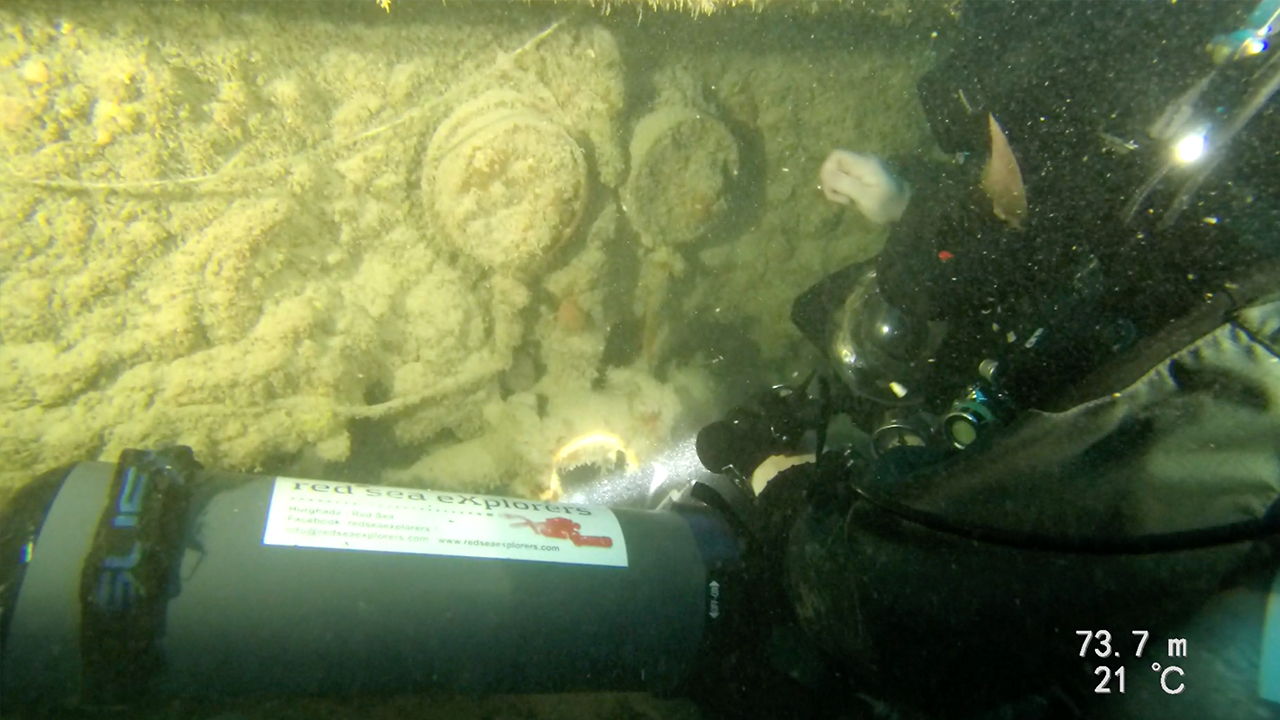
A follow-up dive was
necessary, so we partnered with a dive team from Sweden who had heard about the
discovery and was very excited to lend a hand.
We set the mission of finding other identifying marks or items
to assist in the search for her identity.
This time things went much
smoother logistically, but the surface currents, at 3 knots due to the narrowing
of the strait, will always need to be managed.
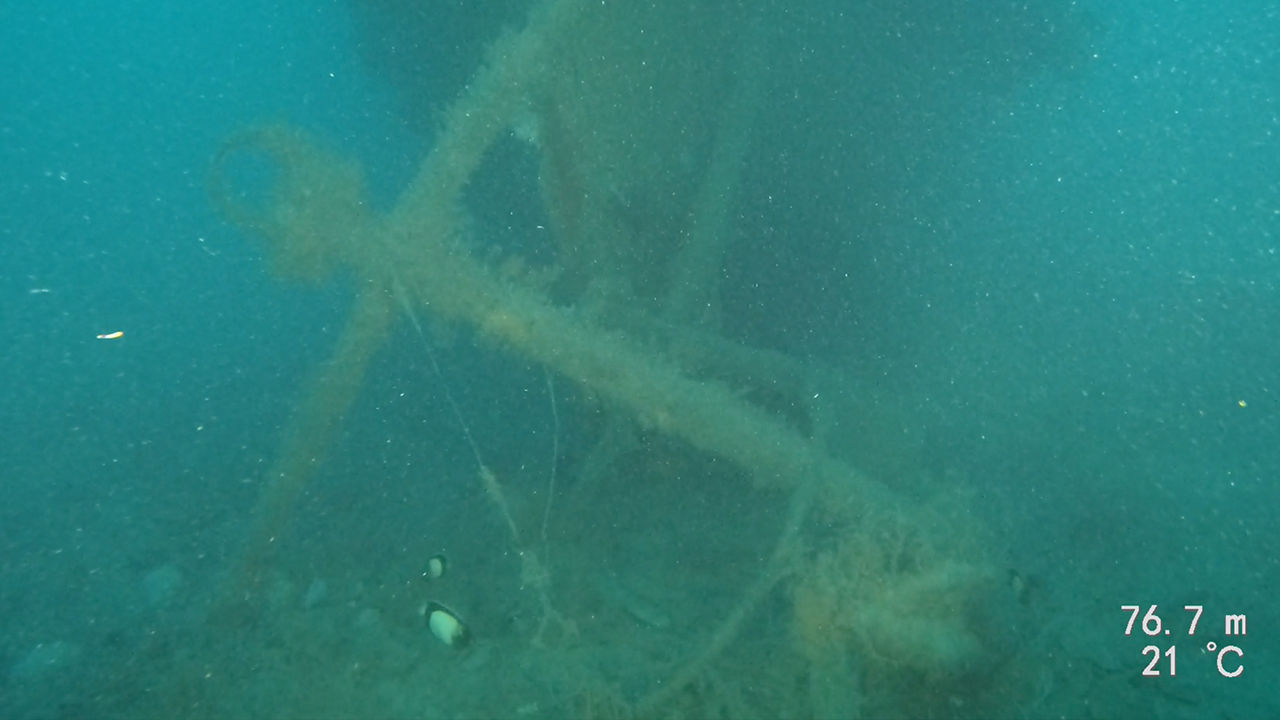
Beginning at the bow, we
noticed the anchors on the sea floor without their chains attached. The anchors
hadn’t been dropped and from more than 150 years of swinging lifelessly from their
chains, their metal rings wore through.
This led us to conclude that the ship was under way when she went down.
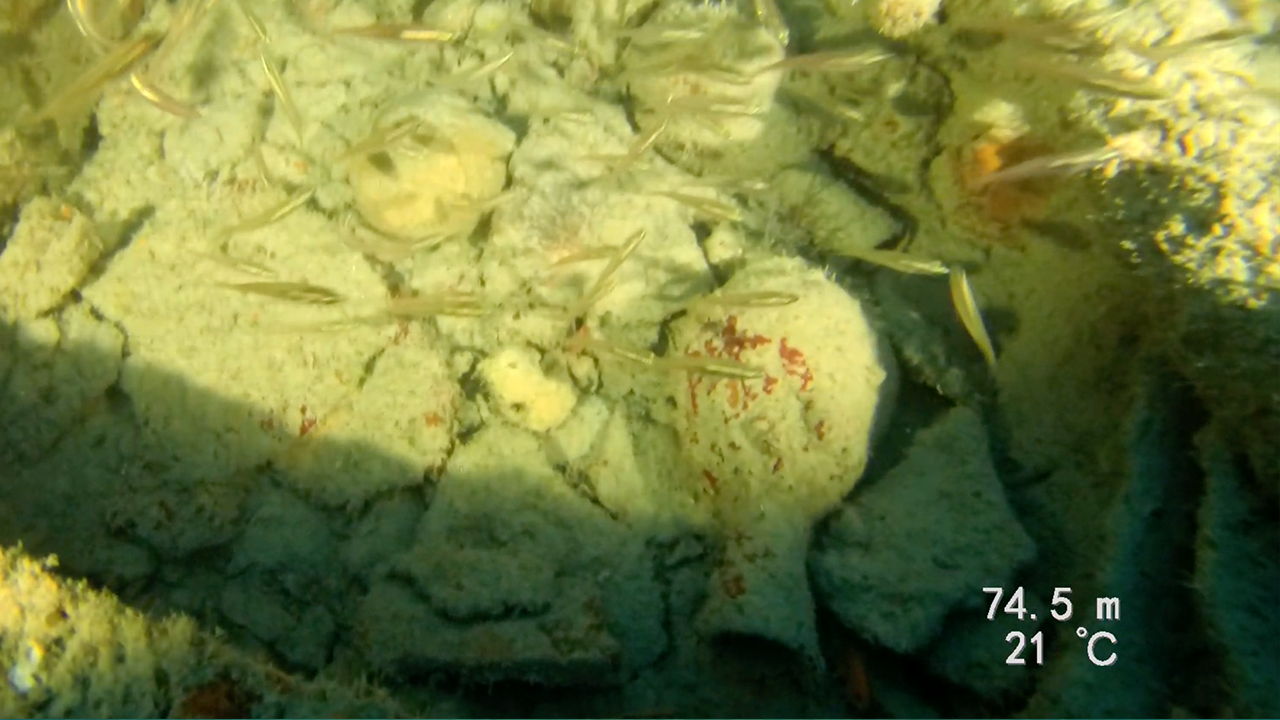
On
the forepeak we searched for the bell, as it would have the name of the ship
engraved into it. We found something
that could have been it, but our excitement was short-lived.
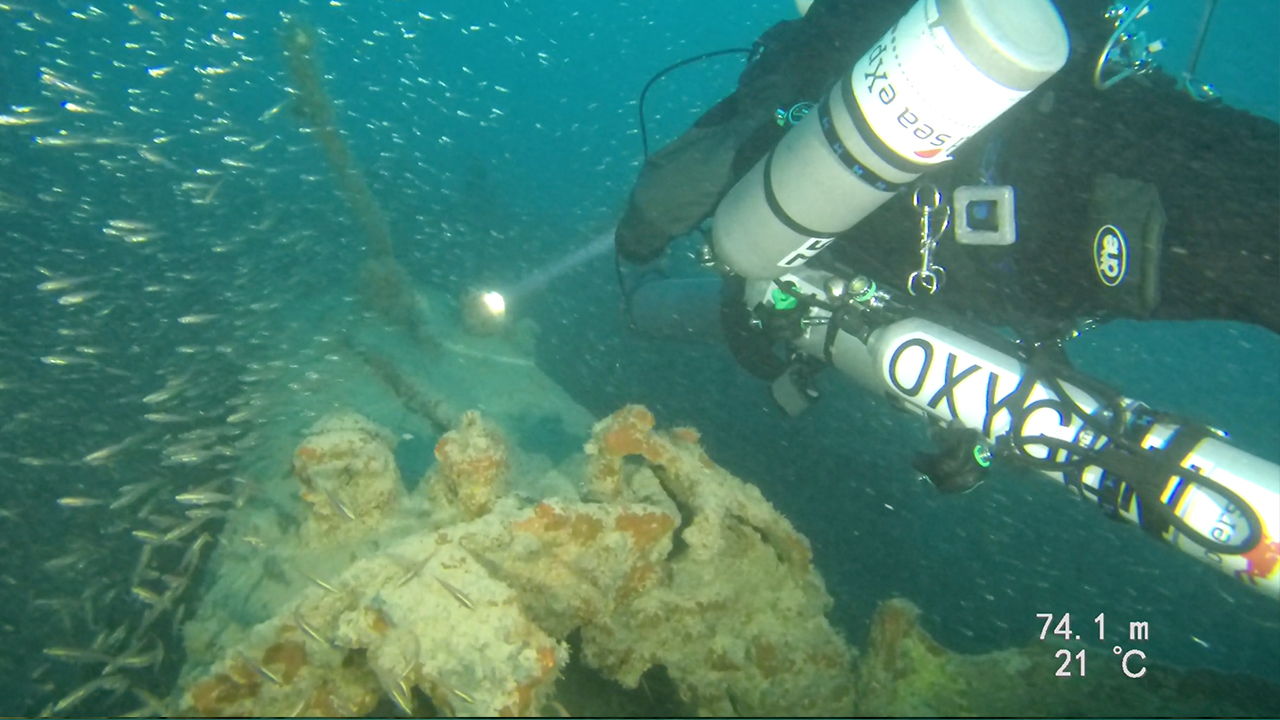
From there we moved on to
inspecting amidships to the stern area, where the boiler and the double expansion steam engine is located. We wanted to focus there because in the
absence of the bell, identifying the engine would be a big help in identifying
the ship. On the engine we found the
plate with all the engine data, however due to the extent of fouling and the
thick layer of sea life that covers the metal, it was impossible to reveal it with
the equipment we had within the bottom-time allowed.
So, we travelled on to the stern area behind the engine, where it was common for
ships of this time to have the captain’s quarters. This ship was no exception, as there we were
thrilled to find plates, bowls and various other potteries.
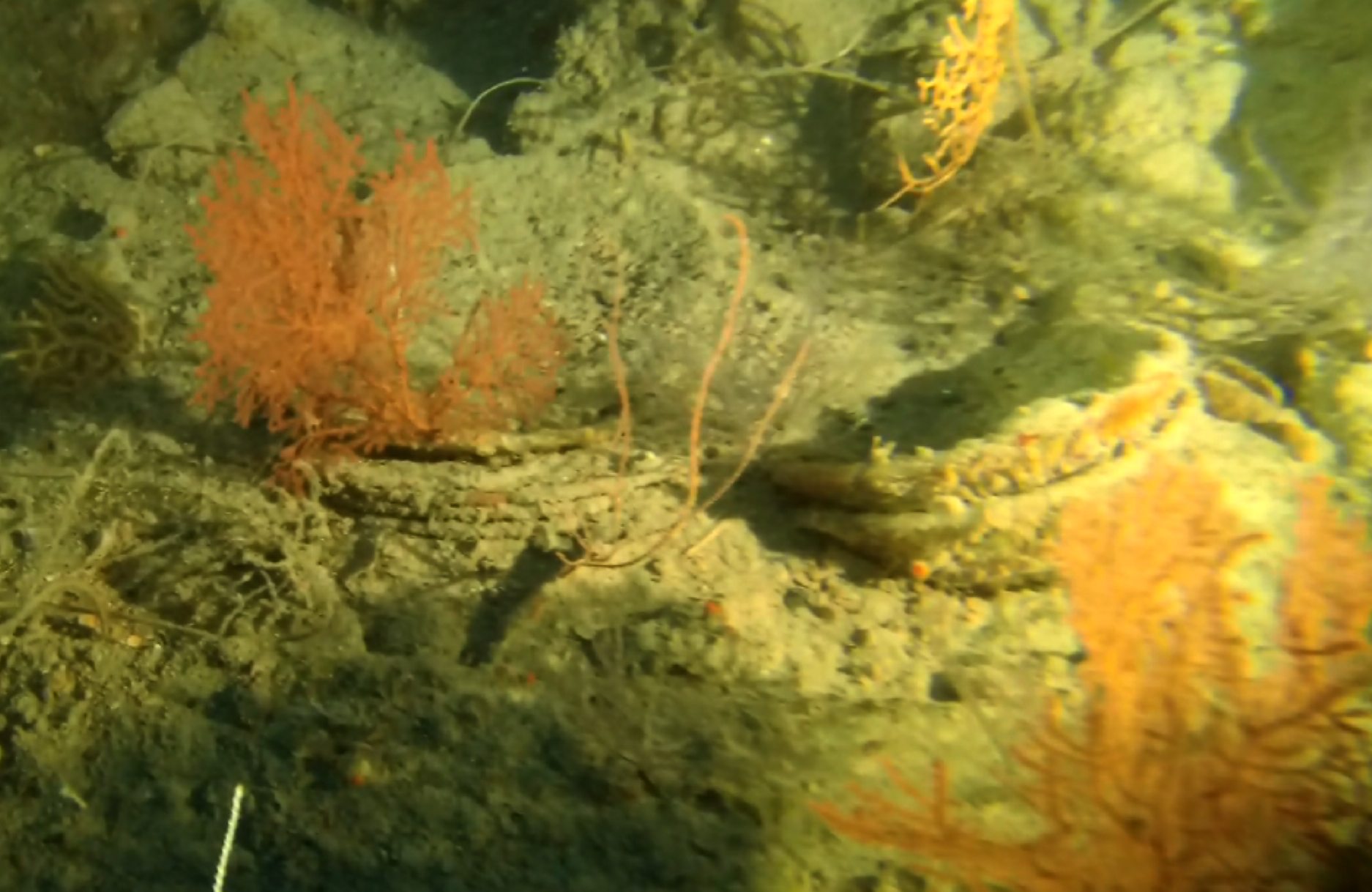
The plates had an Etruscan
design, made of porcelain with an intricate lavender motif. Luckily the name of
the producer was still visible – LE&S.
Through our research we found out that these initials stand for Liddle
Eliot and Son, which produced vases from 1861 – 1869. We now have our first piece of definitive
evidence that the ship could not have sailed before 1861! Of course we don’t know when the plates were
purchased, but a ship of this stature might have had them specially commissioned.
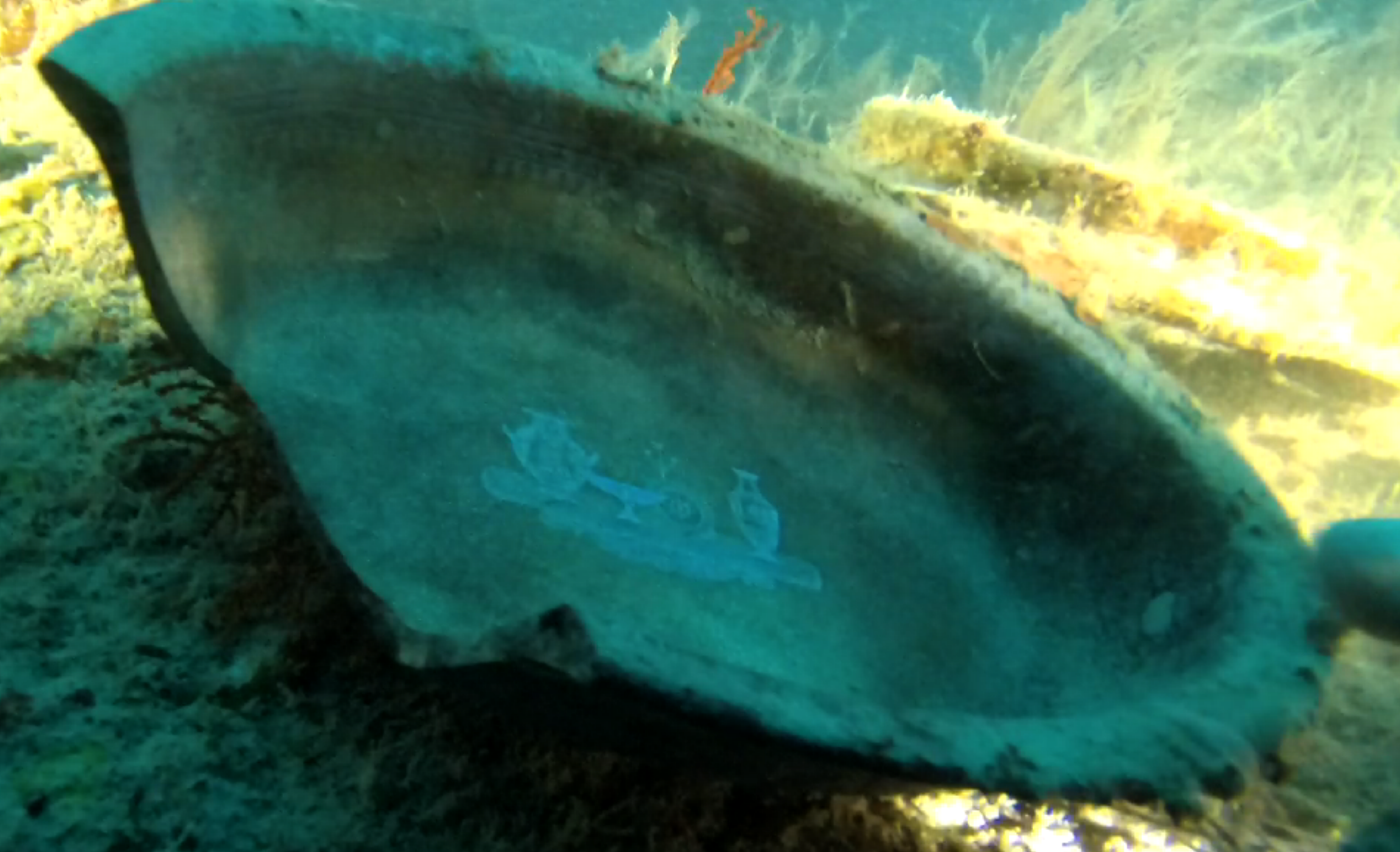
The next day, we returned
with the same team for a second attempt, but again we had no success clearing
the engine plate. We are planning follow-up surveys to record her dimensions and to descend with pneumatic
equipment to finally clear the engine plate.
----------------------------------
February 25 2018
----------------------------------
Using a combination of advanced diving technology and old trusty wreck
finding methods, a team from Red Sea Explorers successfully discovered a virgin
shipwreck in the strait of Gubal on February 25th 2018.
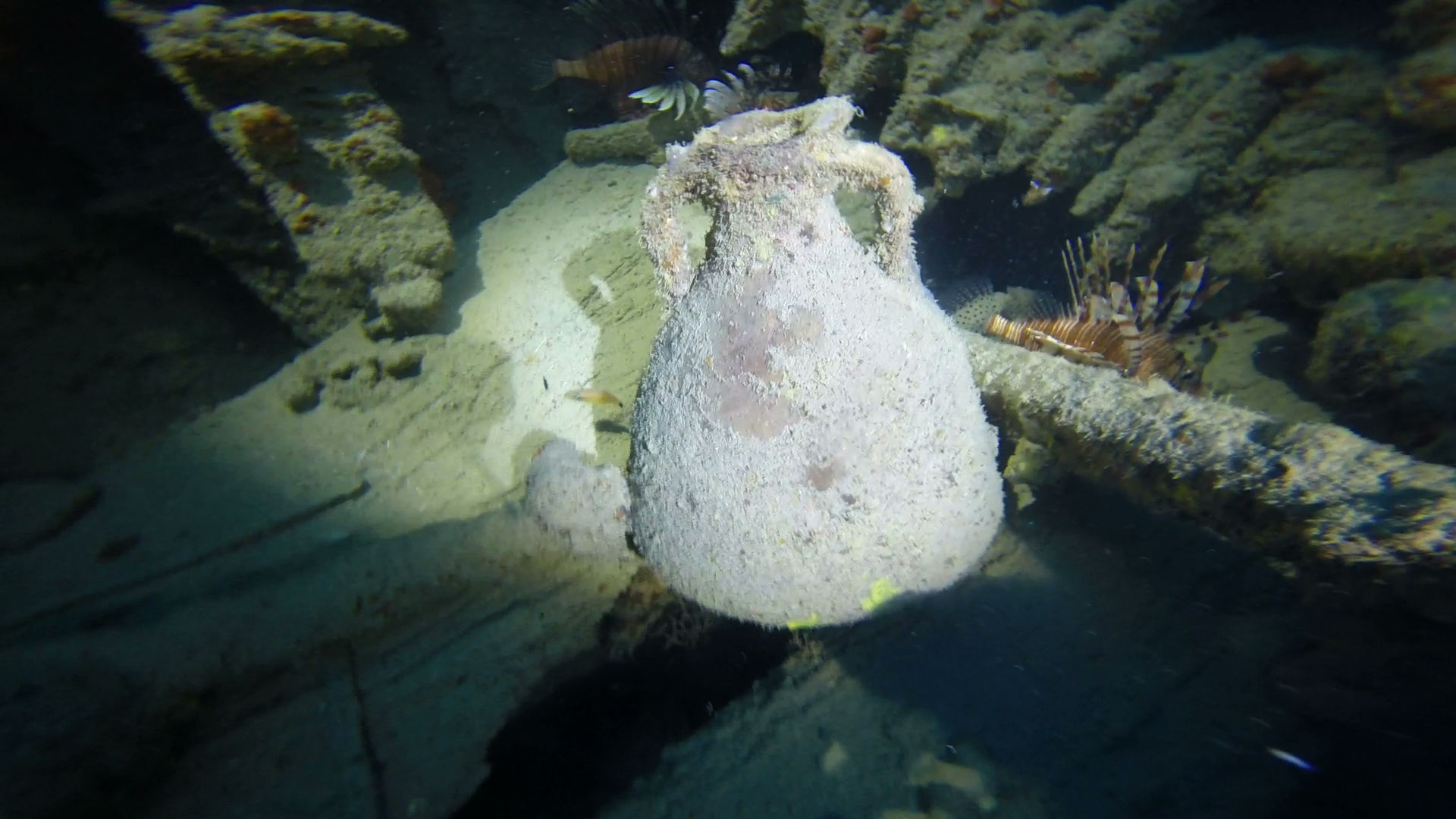
Without a doubt the Egyptian Red Sea is one of the most dived
oceans in the world. You would think by now that all its secrets were revealed
and that all areas are fully explored. On the other hand, the Red Sea is one of
the busiest sailing passages in the world, so it is no wonder that a lot of
ships have ended up on the bottom in the Strait of Gubal since the inauguration
of the Suez Canal in 1869. However most of the lost vessels lie in depths outside
the range of recreational diving and it takes a lot of dedication and effort to
find them. Finding new wrecks in the Red Sea is therefore a rare occurrence.
With the help of a local fisherman, the Red Sea Explorers team had
a promising position to investigate. A special week of exploration was planned
with a team of divers capable of doing extended range diving in open water with
strong currents and rough surface conditions. The fact that many of the
positions were in one of the busiest sailing lanes in the Red Sea only added to
the challenge.
The fisherman had a very solid knowledge of the position and could
describe details of the wreck on the basis of the pieces of debris pulled up by
his angling tools.
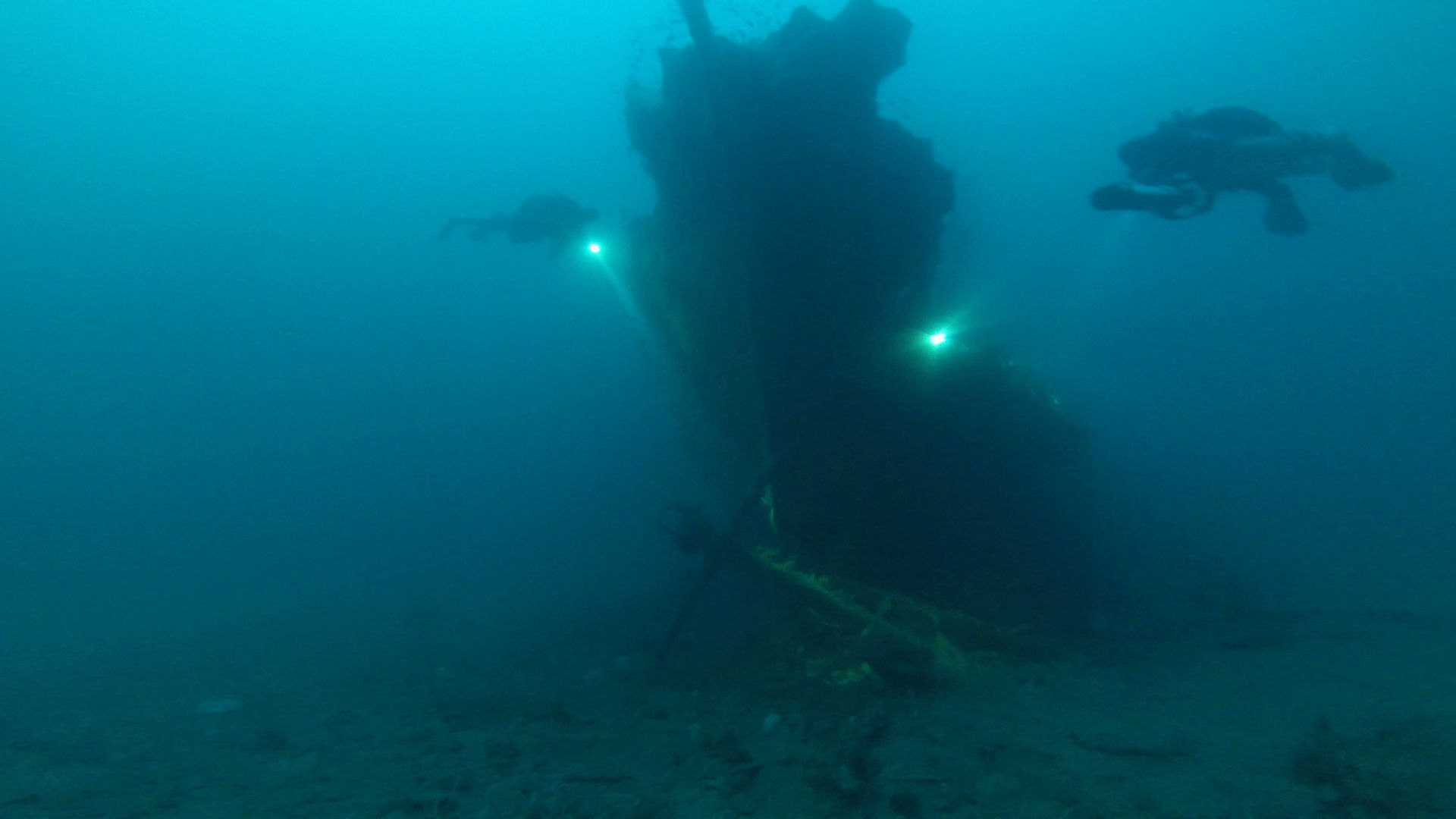
The first attempt to reach the wreck was aborted because the
current on the bottom made it impossible. After 20 minutes scootering on full
throttle against a ripping current while following a line on 65 meters, the
team had to give up. But the sonar image on the support vessel, MV Nouran
one of the liveaboards in the Red Sea Explorers fleet, was so tempting and
alluring that it was decided to make another attempt later the same day hoping
that the current would have lessened and conditions improved.
Imagine the thrill the team experienced when they reached the
bottom on 77 meters and discovered that the shot line was just a few meters
away from a structure that turned out to be the wreck of a large steam ship.
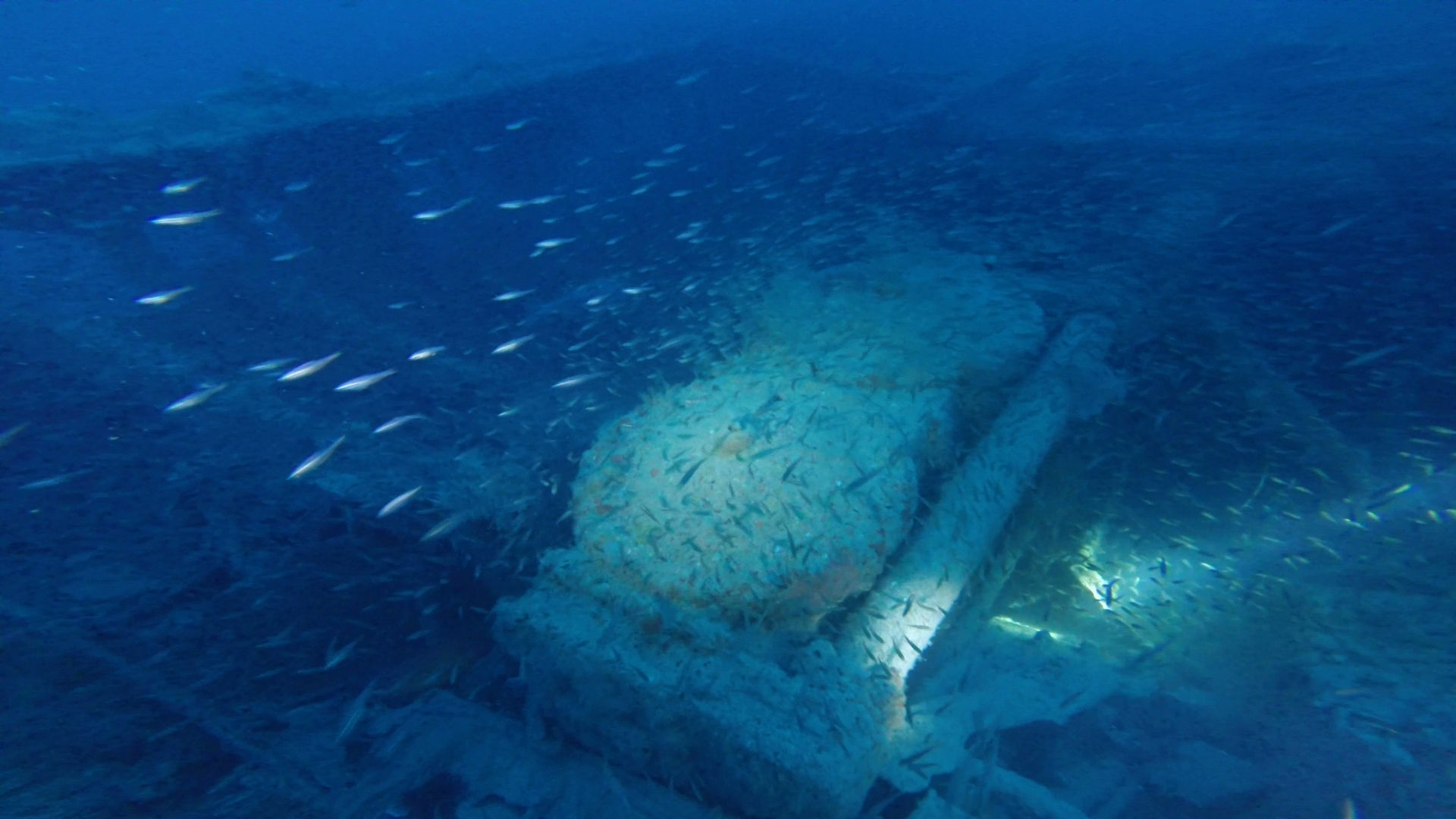
So far, the wreck
has not been identified. We know it is a steam ship, probably late 1800. It
appears younger than the Carnatic and the Ulysses, but she is probably older
than the Dunraven, judging by the size of the boiler. The tidal current that rips
on the bottom of the relatively shallow strait of Gubal has taken its toll on
the wreck and everything taller than 5-6 meters has collapsed. The super
structure and decks are gone, but the hull and bow are still standing proud.
The team were looking for details to help the identification but found no
smoking guns. Now it is up to the historians and wreck experts to dive into the
archives and see if they can find a match based on the information gathered by
the team.
The marine life on
the wreck is spectacular. There is very little protection against the strong current
on the sandy bottom around the site, so the wreck offers shelter that makes the
marine life thrive. The hull is filled with glass fish chaperoned by enormous
groupers and lion fish. Large giant trevallies are roaming the area and they are
visible on the sonar. No wonder the area is an attractive fishing ground.
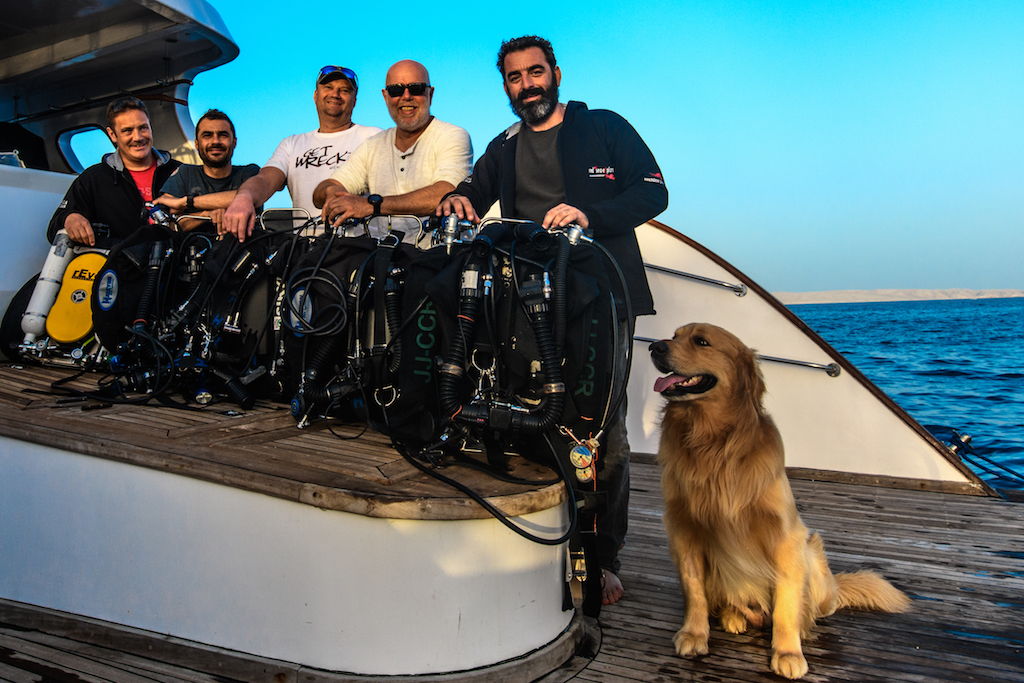
The international
explorers team consisted of Faisal Khalaf (Lebanon), Jesper Kjøller (Denmark),
Sameh Sokar (Egypt), Igor Siryk (Ukraine), Michel Salsmans (Belgium) and Antar (Expedition Dog).
What we know so far:
Location: North of Gobal Island, West of the Traffic Separation Scheme in
the Northern Red Sea at the mouth of the Gulf of Suez.
Ship Type: Steam Ship maybe with sail rigging
Cargo:
Unknow
Ship Design: Unknown
Dimensions: Length approx. 70-90 meters; beam approx. 10 - 15 meters wide.
Orientation: Sitting bow pointing north West
Topography: The wreck is sitting in a flat sandy
Depth:
From 62-76 meters.
Dive Conditions:
Very Difficult/Advanced. Hypoxic Trimix Dive.
Lots of current, both on the surface and on the wreck.
Windy surface conditions make it tricky on the surface.
Expect difficulty hooking the wreck due the current small size of
the wreck.
Visibility is 15 meters; 10 meters at depth.
Returning to the up-line is a must as drifting divers will
be in the way of the massive cargo ships coming up and down the channel.
Life on the wreck:
The wreck itself is covered with glassfish.Giant trevally followed
the divers around the wreck. The rich murky water makes it an excellent feeding
and breeding ground.
This is what we have so far. We will be diving on her again soon,
stay tuned for more news.